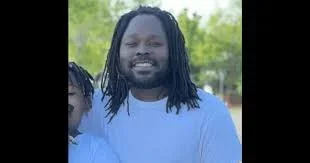Young Sherlock Holmes: Custard Tart Recipe 🥁🥁🥁🥁
/Magical, Captivating, Nostalgic
Year Released: 1985
Directed by: Barry Levinson
Starring: Nicholas Rowe, Alan Cox, Sophie Ward, Anthony Higgins, Susan Fleetwood, Nigel Stock
(PG-13, 109 min.)
"Revenge is a dish best served cold." –French author Eugène Sue: Memoirs of Matilda
If you’d like to time warp to wintry Victorian London, see this gem of film about the early adventures of Holmes and Watson. Long before Harry Potter and his assorted school chums treated us to mystery and mayhem, Young Sherlock Holmes was up to his eyeballs in adventure at his boarding school as well. Only it’s not magic that the precocious teenager has up his sleeve -- just the mandates of cold, hard logic.
The inventive romp owes a bit to Steven Spielberg, its executive producer, as well as the screen writing talents of Chris Columbus, who directed the first Harry Potter film. So don’t be surprised if somehow a dwelling suspiciously like the Temple of Doom winds up in underground London.
And purists may object to this early meeting between Holmes and Watson, since everyone knows they met much later on when Watson, recovering from wounds incurred at the Second Afghan War, agreed to share rooms at No.221B Baker Street with an “enthusiast in some branches of science.” But who could not be drawn to this “affectionate speculation,” an adventure of a lifetime that pits Holmes against one of his darkest adversaries as well as providing clear solutions to many unanswered questions for the Holmes aficionado.
“You have been to Afghanistan, I perceive.” Thus Holmes greets Watson in A Study in Scarlet with a typical blaze of deductive reasoning oft to be repeated in their years of collaboration. The meeting of the two in Young Sherlock Holmes crackles with the same high powers of reasoning. Before Watson (Alan Cox) can introduce himself, Holmes (Nicholas Rowe) does it for him. “Your name is James Watson, from the North of England. Your father is a doctor. You have an affinity for writing as well as a fondness for custard tarts,” he announces.
Holmes easily explains the reasons behind these conclusions. The initial and surname labeled on Watson’s suitcase provides the identity, although Homes mistakenly chooses James since it is the most common male name beginning with J. (Holmes says the correct moniker, John, would have been his second guess.) Watson’s shoes are only made in the North of England. The medical text he carries is no longer used and would probably belong to a family member concerned over his son’s health. The callous on the third finger of his right hand indicates the time devoted to writing, while the telltale stain on his lapel as well as his rounded shape betray the fondness for the tarts. Even as he unmasks mythic supernatural powers to reveal their logical roots, Watson and we are nonetheless very impressed.
Snow replaces the prevalent fog of Doyle’s works, but we still have the dark cobbled streets, exotic and shadowy villains, and picture book Victorian London. Not so customary are the extraordinary special effects, particularly when we recall that the film is 36 years old. The opening sequences capture us immediately as the camera focuses on a hooded figure with a blowpipe. The chosen victim is a corpulent gentleman just embarking on a delicious roasted fowl dinner in a stately restaurant. Much of the effectiveness is owed to the double points of view. First we see the induced hallucination exactly as does its victim. The roasted bird comes to life and begins to claw at the hungry gentleman, but then we see the same scene through the eyes of fellow diners who view a man wrestling with pure air.
It seems several London residents are succumbing to these blowpipe-induced fantasies that irrevocably end in their demise as they flee their mental horrors by throwing themselves out of windows or running before teaming horses. When Holmes’ mentor, Professor Rupert T. Waxflatter, stabs himself to death in a curio shop, the mystery becomes personal. Waxflatter’s niece is the very lovely Elizabeth (Sophie Ward), and it is exquisitely tender and heart rendering to see Holmes in the full throes of young love.
Together Elizabeth, Holmes, and a reluctant Watson set about to prove a link between these supposed accidental deaths. It will lead them to the darkest heart of London, a nefarious cult within its bowels, and unfathomed deceit and treachery.
Holmes rides to the rescue of lovely Elizabeth, not in the horse drawn cab of later London, but in his revised rendition of Professor Waxflatter’s flying machine. He and Watson can only pray that it will take to the sky this time. A climatic scene of fire and destruction, clashing swords and battling wills has Watson rising up to heroic stature just in time. But beware of more than one false ending, and keep your eyes on the screen past the credits for a final cinematic slap in the face.
—Kathy Borich

Film-Loving Foodie
One of the film’s most suspenseful sequences is when Elizabeth, Holmes, and Watson are chased by sword wielding, blowpipe spouting members of the feared Ramitap cult through the dark streets of London. They flee to a fog-bathed cemetery and become separated. Between the cold tombstones and the fearsome pursuers, you would think they had enough on their hands, but then enter the hallucinations induced by their blowpipe wounds.
Interspersed between Elizabeth’s nightmare of being buried alive among writhing corpses and Holmes’ logical triumph as he talks himself out of his, we have the delightful comic relief of Watson’s horrid fantasy. Gulliver-like, he is tied up by a rope of animated sausages and while he looks longingly on a case of custard tarts, cream puffs and assorted pastries, they sprout little arms and legs like somewhat malignant Pillsbury Doughboys.
Somehow with their high-pitched giggles and unblinking eyes they are not so tempting now. But with squeals of delight, the puffs throw themselves upon Watson and try their darnedest to wriggle their whipped cream bodies into his sealed lips. Too bad he wasn’t born into our diet conscious times. This sequence could be revisited for a wonderfully marketable and pricey aversion therapy video.
Custard Tarts
Individual custard tarts served with fresh fruit are the essence of simplicity after a rich meal. Light and delicate yet flavorful, these tarts make a lovely presentation dressed with fresh mint leaves.
Ingredients
6 prepared single-serving graham cracker crusts
1 pkg. (3 oz.) vanilla pudding and pie filling mix (not instant)
1/3 cup water
1 can (12 fl. oz.) CARNATION Evaporated Lowfat 2% Milk
1 teaspoon grated lemon peel
1 pkg. sliced fresh fruit (optional)
Mint leaves (optional)
Directions
COMBINE pudding mix and water in small saucepan. Add evaporated milk and lemon peel; stir until smooth. Cook over medium-low heat, stirring constantly, until mixture comes to a boil and thickens.
POUR into crusts; refrigerate for 1 hour or until set. Top with fruit and mint leaves before serving.
VARIATION: For a Key Lime twist to this recipe, substitute 2 teaspoons fresh lime juice and 1 teaspoon grated lime peel for the grated lemon peel. Top with lime slice.
Recipe Source: Very Best Baking.com

















